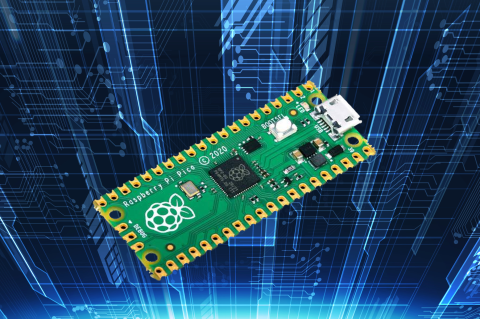US Government Calls for Revitalizing American PCB Production and Manufacturing

Unless you’ve been designing while living under a rock, you’ve noticed how hard it has become to find reliable sources of semiconductors. While companies deal with the fallout from massive consumer demand by implementing just-in-case sourcing strategies, the semiconductor industry is responding with new investment in semiconductor fabs. While some companies like United Microelectronics are investing billions in additional capacity overseas, Intel has dominated the news cycle with its landmark $20 billion investment to build two new factories in Ohio.
While the semiconductor industry enjoys plenty of new investment and is expecting heightened demand to be permanent, what is expected to happen on the PCB front? It’s been well known that outsourcing has decimated the domestic PCB manufacturing industry in North America, and particularly in the United States. Home-grown operations have largely been relegated to military PCB production, assemblies with sensitive IP, quick-turn prototyping, contract manufacturing, or low-touch manufacturing.
A new pair of reports from the US Department of Homeland Security (DHS) and US Department of Commerce (DoC) was released on February 24, and the reports show the White House acknowledges the strategic importance of on-shored manufacturing capacity for information and communications technology (ICT). This marks a big shift in how the US government is viewing electronics supply chains generally, as well as the role of PCBs in ICT products.
The main DHS/DoC report can be accessed here.
What’s in the DHS/DoC Report
The report released by DHS/DoC focused primarily on all aspects of the ICT supply chain, ranging from upstream components like bare PCBs to assemblies and application development. The report draws some important conclusions regarding PCB supply chain risk that should inform the industry going forward:
- While the US leads in ICT innovation in many product categories, PCB and PCBA production is increasingly concentrated in China. OEMs continue to outsource firmware development overseas.
- Outsourcing creates an IP security risk. The risk arises due to exposure of technical data to third parties with lack of transparency into data handling and cybersecurity practices.
- Outsourcing creates a workforce security risk. Industry stakeholders reportedly struggle to find domestic manufacturing and software development talent, despite expected growth in available jobs.
- OEMs rely heavily on a limited number of sources to support product development and manufacturing.
- The state of the ICT industrial base leaves the United States vulnerable to multiple “externally derived risks stemming from intellectual property theft, economic dependencies, weak labor standards and climate concerns”.
The risks identified here are consistent with the warnings sounded in an IPC report from last month that identified flaws in the US electronics manufacturing approach. Specifically, outsourcing of production capacity combined with heavy concentration of capacity in China are the underlying causes of the risks outlined above. Any loss of access to China’s PCB production capacity would be an economic disaster.
The price paid by the US PCB industry for outsourcing has only become truly obvious over the past few years in the face of supply chain volatility and geopolitical instability. While the on-shored production capacity problem can be fixed relatively quickly, the workforce problem is much more insidious and requires significant investment. The manufacturing knowledge that is critical to producing advanced electronics is at risk of being lost as the existing cohort of manufacturing specialists retires.
The Road Ahead
In the report, the authors identified 7 courses of action to overcome the unacceptable supply chain risk: on-shoring, workforce development, and sustained R&D by manufacturers. Currently, the US share of global PCB production has fallen from over 30% to just 4%, and only four of the top 20 electronics manufacturing services (EMS) companies are based in the United States. US and European companies that have experienced significant supply chain problems during COVID are clearly over-reliant on external sources, particularly in the APAC region.
The divergence between US and APAC manufacturing capacity can be seen beginning around 2000, and overseas production has steadily increased, as seen in the IPC data below.

While the above data ends in 2014, it’s well known that the trend has continued up to today, leading to the current situation where over 50% of commercially available PCBs are produced in China. While there is nothing wrong with producing overseas, it’s important to also manage risk, and that can only come through greater diversification.
Everyone familiar with the supply chain situation agrees that diversification of production capacity is the one solution that will reduce risk for end users. On-shoring this production capacity, or at least spreading it beyond Southeast Asia, is the best way to reduce the risks outlined above. While the recognition by the administration is an encouraging development for American PCB manufacturing capabilities, and really for Western manufacturing as a whole, it’s just the beginning of significant work.
Time will tell if organizations like IPC, PCEA, and PCBAA can succeed in building momentum around reshoring for IP-sensitive and mission-critical products. The American cohort of electronics manufacturers has lost significant market share due to 20+ years of offshoring, and the accumulated manufacturing capacity in Southeast Asia has created significant risk of supply chain bottlenecks as a result. We saw how this affected the semiconductor industry throughout 2020-2021, but now the White House appears to be equating the semiconductor offshoring problem to a national security issue. These reports seem to illustrate the willingness to take the same stance with regard to PCB production and assembly.
At Altium, we’re doing our part to help overcome these challenges by providing high-quality educational content to engineering students through the Altium Education program. Our goal is to train and develop the next generation of design engineers at home and abroad, and ultimately to create a more sustainable future for the electronics industry. Designers that want to take greater control over their supply chain can use Altium Designer on Altium 365 to work securely and reach unprecedented levels of efficiency.
We have only scratched the surface of what is possible to do with Altium Designer on Altium 365. Start your free trial of Altium Designer + Altium 365 today.










